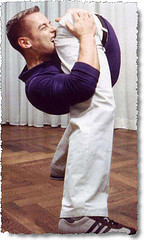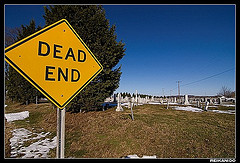 |
Tweet | Delicious |
|---|
I’ve got two kids in school, each considering careers in the health care field. This is reassuring to a former art school graduate with a degree that has provided him with such job “opportunities” over the years as Starbucks Barista and Repo-man.
“The football team at my high school, they were tough. After they sacked the quarterback, they went after his family.”
It’s not easy putting one child through college, never mind two. So while I’m glad they’ve chosen to enter a growing field, one that may even provide job opportunities for them, we’re cost sensitive. Paying for four years of college is tough. If either child wants a career in medicine, they’ll have to take out loans and find some additional means of financial support for the additional years of schooling. That leads me to ask some logical questions.
What will four years of pre-med school or nursing school do for you? After paying for four years of college and a medical degree, what is the expected return on investment? And more specifically, is an advanced college degree worth the money?
“Yeah, I took out an English teacher. That didn’t work out at all. I sent her a love letter… She corrected it!”
It’s naturally to assume that the more years of schooling one endures, the higher one’s expected salary should be. And so it would follow that a doctor can expect to make more than a nurse. Before we fall in love with the idea of a medical degree, let’s do some fact checking. Let’s compare the cost and expected dividends of both the medical and nursing degrees.
In our research, we found that the average cost difference between a four year degree from a private university vs. a public one is around $75,000. So we want to go the public university route. In order to compare “apples to apples”, we’ll look at the same area of specialty; compare the career possibilities for Anesthesiologists and Nurse Anesthetists.
“With the shape I’m in you could donate my body to science fiction.”
Our research also indicated that nursing and pre-med students can expect to pay about the same for their undergraduate degrees. Additional schooling is necessary for both medical doctors and nurses in the area of anesthesiology, so here’s where we’ll potentially find cost differences. Again, comparing apples to apples, we’ll assume that both students are attending SUNY at Buffalo. The cost of an undergraduate degree is approximately $78,000 according to the school’s website. However, the cost of a three year CRNA certificate from this same school costs around $80,000 while a medical degree from the same runs around $208,000.These are the kind of numbers one expects to read in a sci-fi novel.
Let’s look at expected income. According to All CRNA Schools.com, Nurse Anesthetists in NY state can expect an income of around $145,000 per year. Having invested a total of around $158,000 on school, that seems reasonable. On the other hand, an Anesthesiologist can expect to make around $220,000 per year*. But their monetary output is almost $300,000! That’s a tough nut to crack, no matter how much you make.
“I mean, the high school I went to, they asked a kid to prove the law of gravity, he threw the teacher out the window!”
The bottom line is, we no longer live in a time when degrees are affordable. When it comes to tuition, what goes up does not necessarily come down. So choose your career path wisely. Before you begin your studies, consider return on investment.
—-
*This estimate is provided by DiplomaGuide.com.
[For the movie buffs among us, the headings above are all drawn from Rodney Dangerfield’s mid-eighties comedy entitled Back To School]
| Be sure to look for us on your favorite networks: |
|---|
 |
 |
|---|
| Visit Our Bookstore for Great Values! |
|---|
 101 Tips Every Job Seeker Should Know |
 The Ultimate Online Job Seekers eBook |
 10 Biggest Interview Mistakes |
 10 Biggest Resume Mistakes |
|---|
| Check out these hot articles! |
|---|





![Higher Learning Leads to Higher Earnings, Especially for Men [InfoGraphic] Higher Learning Leads to Higher Earnings, Especially for Men [InfoGraphic]](../4022/4340939642_374fbff6e3_m.jpg)




